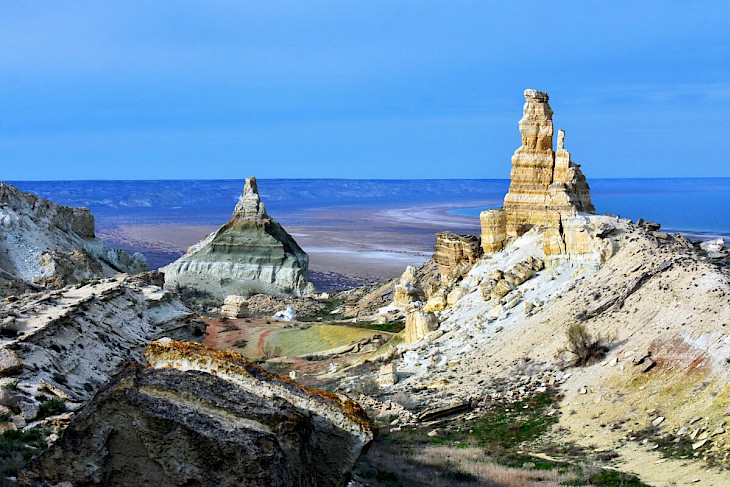Official representatives of Uzbekistan, Kazakhstan, and Turkmenistan - the three signatories of the Ustyurt Memorandum - have signed a joint roadmap to strengthen environmental protection of the Ustyurt Plateau. The document was developed with support from the Michael Succow Foundation and the Secretariat of the UN Bonn Convention on the Conservation of Migratory Species of Wild Animals, Gazeta.uz reports.
The 2025–2030 roadmap aims to unite the efforts of regional governments and international partners to preserve the plateau’s biodiversity, which is increasingly threatened by planned infrastructure and energy projects, according to Rustam Murzakhanov, an environmental expert with the Succow Foundation.
The roadmap outlines seven key areas of cooperation:
-
Transboundary conservation of wildlife and habitats
-
Improved monitoring of rare species that migrate across borders
-
Raising awareness of the Ustyurt Plateau’s ecological importance
-
Combating poaching
-
Developing ecotourism and reducing the environmental impact of economic activity
-
Joint efforts to reintroduce the cheetah
-
Strengthening international environmental partnerships
Relevant environmental agencies from all three countries are involved in implementing the initiative.
Ecosystem Under Threat: Barriers to Migration
The Ustyurt Plateau spans parts of Uzbekistan, Kazakhstan, and Turkmenistan, forming a unique natural landscape. Despite its harsh climate - with scorching dry summers and cold, windy winters - the region supports a relatively untouched ecosystem, home to over 700 plant species, around 230 bird species, and 60 species of mammals. These include goitered gazelles, kulan (wild asses), saiga antelope, and a rare population of Ustyurt urial sheep.
Animal migration has become increasingly difficult since 2012, when Kazakhstan began reinforcing its borders in line with its obligations as a member of the Eurasian Economic Union (EAEU). Multi-layered barbed wire fences were installed along the border, not only blocking unauthorized vehicle crossings but also impeding wildlife movement — a critical survival factor in the arid steppe.
“Fences were even installed on cliffs as high as 150 meters,” said ecologist Rustam Murzakhanov. Turkmenistan later followed suit, creating a double barrier along its border with Kazakhstan. Although Kazakhstan later opened migration corridors in some areas, experts say this has worsened poaching, as hunters now know where animals are likely to cross.
Using camera traps, ecologists have identified new locations where lower layers of fencing should be removed. Murzakhanov emphasized the need to expand research on migratory routes and the effects of barriers on wildlife movement. New camera traps will be installed at key points to monitor animal behavior and develop precise recommendations for safe border crossings.
CentralasianLIGHT.org
April 30, 2025

